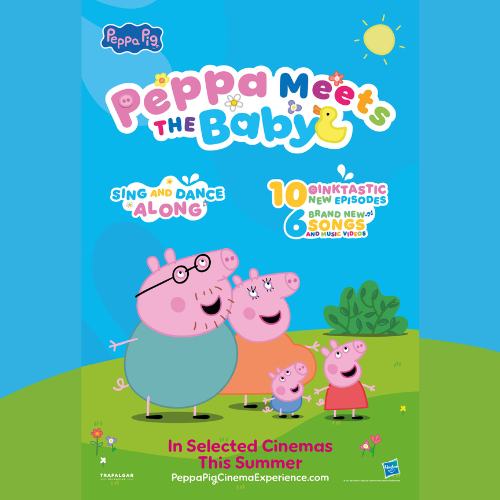Start Licensing’s Ian Downes looks at how retailers are finding space to focus on opportunities such as Halloween.
As noted last week, retailers are definitely getting ready for Christmas and more space is being given over to Christmas products.
However, some retailers have still found space to focus on other selling opportunities such as Halloween. Over recent years licensing has featured more frequently in Halloween product ranges. This is in part explained by more retailers backing Halloween, a rise in its popularity generally, but also rights holders spending more time on being ‘Halloween ready’ particularly with ready to use style guides and design themes.
I noticed that Tesco was selling a range of Halloween apparel and costumes.
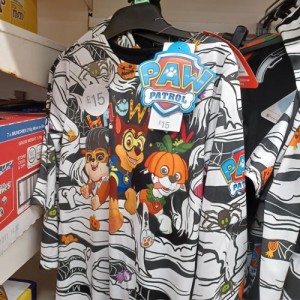 Interestingly as well as costumes there seems to be more of a market for more traditional apparel – for example I spotted a PAW Patrol pyjama suit which featured Halloween-themed PAW Patrol character art.
Interestingly as well as costumes there seems to be more of a market for more traditional apparel – for example I spotted a PAW Patrol pyjama suit which featured Halloween-themed PAW Patrol character art.
As noted in previous Lookouts, the licensing industry seems to be getting better at developing artwork assets that are to be used on very specific occasions. This requires a certain amount of investment and planning, but it seems to pay off. I can certainly see licensed properties playing more of a role in other retail occasions if brand owners are prepared to invest in specific design treatments.
That said there will always need to be a return on investment. But this commitment to bespoke design should appeal to retailers and make licensing more attractive to retail buyers. It dovetails well with the trend for retailers looking for unique or exclusive products or designs.
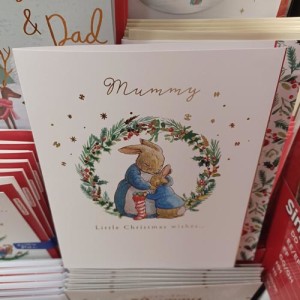 As noted, Christmas is definitely creeping into retail at the moment and licensing is certainly playing its part. Not unexpectedly in the greeting cards category Christmas ranges are being rolled out. I noticed in my local WH Smith that it had given a lot of space to Christmas cards.
As noted, Christmas is definitely creeping into retail at the moment and licensing is certainly playing its part. Not unexpectedly in the greeting cards category Christmas ranges are being rolled out. I noticed in my local WH Smith that it had given a lot of space to Christmas cards.
Within this space I noticed a few good examples of licensed cards – one was a Peter Rabbit card for ‘Mummy’: this featured some really well chosen charming artwork coupled with a lovely caption ‘Little Christmas Wishes’, while another prominent licensed range was one that features Quentin Blake’s artwork. This stands out for its originality and is very distinctive. Again, the specific pieces of art are well chosen by the card publishers. In this case it was a Dad card, in fact a ‘Great Dad’ card.
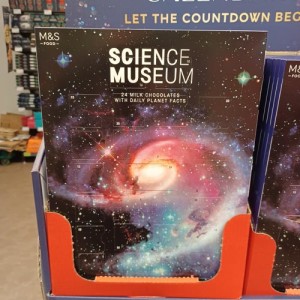 Another traditional category for Christmas are chocolate advent calendars. This is a category that Marks & Spencer supports well. I was interested to see that one of its chosen brands this year was The Science Museum. This advent calendar includes 24 milk chocolates with Daily Planet facts. I guess part of the selection process for M&S in this case was the fact that The Science Museum adds some educational value to a treat category. It is also a good example of heritage brands working in a range of product categories, but trading on their educational credentials to compete with other brands.
Another traditional category for Christmas are chocolate advent calendars. This is a category that Marks & Spencer supports well. I was interested to see that one of its chosen brands this year was The Science Museum. This advent calendar includes 24 milk chocolates with Daily Planet facts. I guess part of the selection process for M&S in this case was the fact that The Science Museum adds some educational value to a treat category. It is also a good example of heritage brands working in a range of product categories, but trading on their educational credentials to compete with other brands.
M&S also had a Where’s Wally? Advent Calendar which is a brand that I think it has run with in this category for a number of years, suggesting it works well. This is a good reminder that to succeed in categories like this that the investment in design is not just for one season – a product like an advent calendar will need a new piece of artwork every year. In the case of a property like Where’s Wally? that relies on illustration, this can be quite a challenge but, of course, an ongoing listing in a retailer like M&S is a good reward for efforts in this direction.
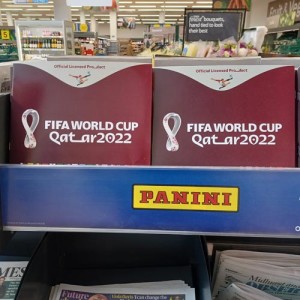 Another major retailing opportunity looming on the horizon is the FIFA World Cup. I noticed that Panini has launched the official sticker collection for the World Cup which takes place in Qatar. The World Cup is normally a summer event but because of the location this time round it has become a winter event.
Another major retailing opportunity looming on the horizon is the FIFA World Cup. I noticed that Panini has launched the official sticker collection for the World Cup which takes place in Qatar. The World Cup is normally a summer event but because of the location this time round it has become a winter event.
Panini has made the collection very visible in retailers like Tesco and it is positioned in the news section, as well as near till points. It should get noticed and I am sure the interest in the collection will increase as the World Cup gets nearer. It will be interesting to see how other licensed ranges for the World Cup are positioned in-store during a very competitive retail period – World Cup merchandise will be competing with Christmas products for space.
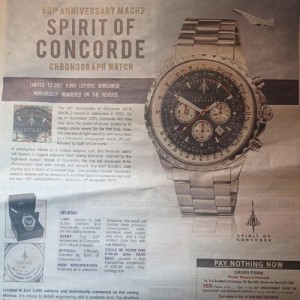 With Halloween, Christmas and the World Cup all competing for retail space it is a reminder that licensing needs to think about new routes to market for product and new ways to reach consumers.
With Halloween, Christmas and the World Cup all competing for retail space it is a reminder that licensing needs to think about new routes to market for product and new ways to reach consumers.
Of course, ecommerce helps with this, but it is also good to remember how companies like Bradford Exchange are expert in direct marketing and how they have been finding audiences for licensed products so successfully over the years. It has built up a great knowledge of consumers and their buying interests. This data is invaluable when planning out marketing campaigns.
I was reminded of this earlier in the week when I spotted a full page advertisement for a Spirit of Concorde Chronograph watch in the Metro newspaper. I work with Bradford Exchange on this brand and it has been very enlightening to see how it has identified opportunities to sell licensed products using its consumer knowledge, product know how and also its ability to work with media owners to take advantage of short-term opportunities. We have a lot of ads that are pre-approved and ready to go so Bradford Exchange can take advantage of short-term media opportunities without worrying about getting copy approved. I think this is a good example of being more market ready and aware of the realities of a challenging market. It will be interesting to see what response the advertisement gets. We will certainly be able to find out and it will help shape future plans.
Rather like developing Christmas and Halloween artwork, this is another example of licensing taking a more bespoke and targeted approach to the business of licensing.
Ian Downes runs Start Licensing, an independent brand licensing agency. His Twitter handle is @startlicensing – he would welcome your suggestions for what to look out for.

















